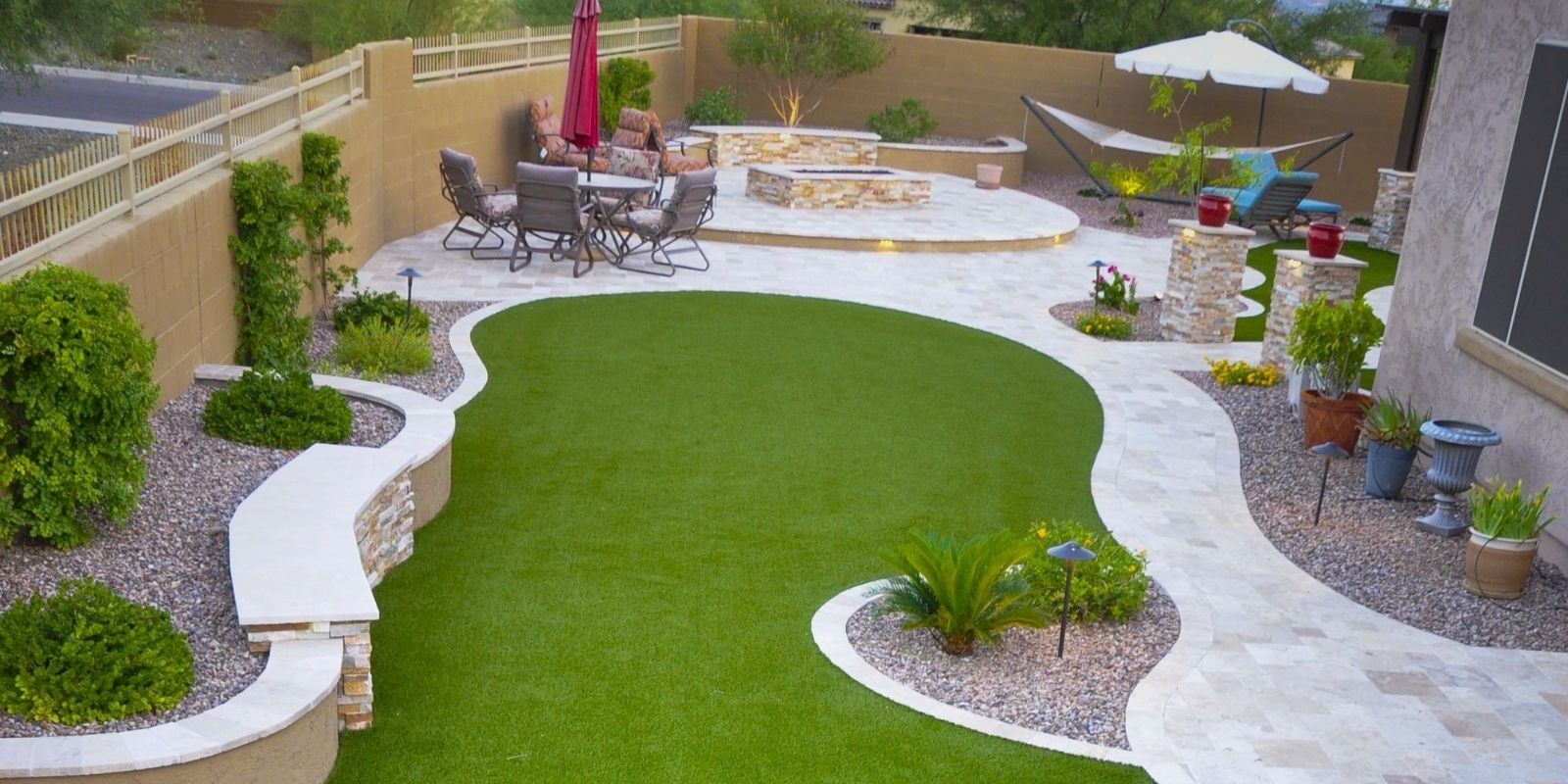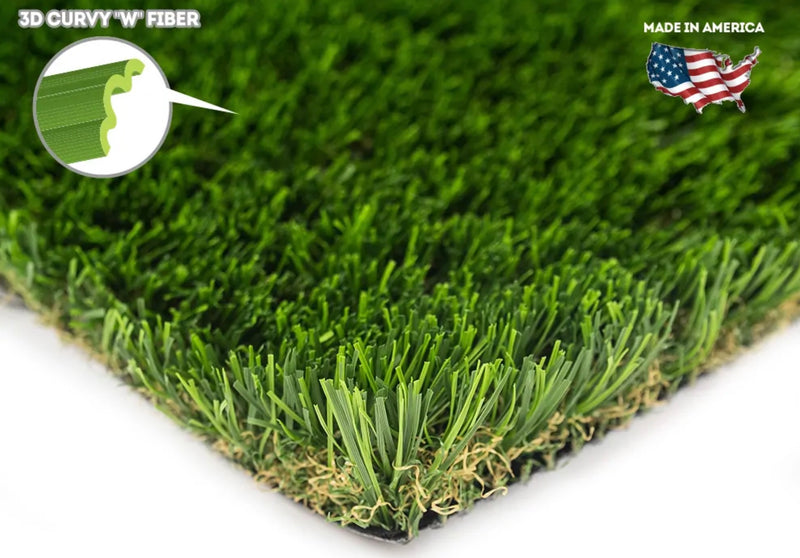Explore the Environmental Benefits of Opting for Synthetic Grass Solutions
The fostering of synthetic lawn services presents a compelling possibility to attend to pressing ecological challenges. By considerably decreasing water usage and minimizing the application of hazardous chemicals, these choices not just advertise sustainable landscaping however also secure neighborhood ecosystems. Moreover, the lower carbon footprint related to lowered maintenance tasks adds to a more sustainable approach to land administration. Nonetheless, the implications of these advantages expand beyond mere conservation initiatives, questioning concerning their long-term effect on environment preservation and total eco-friendly equilibrium. Exploring these measurements discloses a complicated interplay worth taking into consideration.
Water Conservation Perks
One of one of the most considerable benefits of fabricated turf is its capability to conserve water. Typical turf yards need significant watering, specifically in areas prone to drought or water limitations. On the other hand, synthetic turf does not require watering, considerably decreasing the overall need for water resources. This feature is particularly helpful in deserts where water deficiency is a pushing worry.
By getting rid of the need for regular watering, synthetic grass contributes to lasting landscape practices and assists mitigate the environmental influence of excessive water usage. Furthermore, the preservation of water encompasses the reduction of overflow, which can lead to soil erosion and waterway contamination.
In addition, the setup of fabricated grass enables home owners and communities to assign water resources more efficiently, concentrating on necessary uses such as alcohol consumption water and farming. The change in the direction of synthetic grass not just advertises liable water use yet additionally aligns with broader environmental goals aimed at protecting natural deposits.
As areas increasingly prioritize sustainability, the water conservation benefits of synthetic grass offer an engaging instance for its adoption in business and property landscape design projects.
Reduced Chemical Usage
The change to synthetic grass considerably reduces the reliance on chemical therapies typically used in all-natural lawn maintenance. Standard grass management generally involves the application of plant foods, pesticides, and herbicides to advertise development and control insects. These chemicals can pose dangers to human health, neighborhood wildlife, and the environment, adding to soil and water contamination.
On the other hand, fabricated turf removes the requirement for these unsafe compounds. When installed, it needs very little maintenance, mostly consisting of regular cleansing and irregular infill replenishment. This decrease in chemical use not only profits the prompt environment however likewise adds to more comprehensive eco-friendly security. By lessening the release of synthetic substances into the ecological community, synthetic grass advertises much healthier dirt and water supply.
Moreover, the lack of chemical runoff related to synthetic grass installments assists secure neighborhood rivers from contamination, supporting marine life and maintaining biodiversity. Arizona artificial turf. As areas increasingly prioritize lasting methods, choosing man-made turf presents a practical remedy that lines up with environmental preservation objectives. Through this shift, homeowner can appreciate rich green areas without endangering environmental health, leading the means for an extra lasting future
Lower Carbon Footprint

Additionally, the installation of synthetic grass can lead to considerable water preservation. Natural lawns require significant quantities of water for watering, which not just adds to the carbon footprint connected with water removal and treatment but additionally strains neighborhood water resources. On the other hand, synthetic turf requires very little maintenance, needing no watering, thereby substantially decreasing water use and its connected power costs.
In addition, the long life of synthetic grass adds to its reduced carbon impact. With a lifespan of up to 15 years or more, the need for regular replacements is reduced, causing much less waste and reduced power intake in manufacturing and disposing of standard yard options. Generally, fabricated grass offers a lasting alternative for environmentally mindful landscape design.
Environment Preservation
Habitat preservation is a vital factor to consider in the discussion over landscape design options, especially when comparing synthetic grass to natural turf. Natural lawn lawns typically call for extensive upkeep, consisting of the usage of herbicides, pesticides, and plant foods, which can detrimentally affect local communities. These chemicals can leach into the soil and waterways, harming native flora and fauna and interfering with local habitats.
On the other hand, synthetic grass presents a possibility to my explanation minimize the ecological impact of landscape design. By choosing synthetic yard, home owners can minimize the disruption of all-natural habitats related to conventional grass treatment methods. Synthetic grass removes the demand for dangerous chemicals, thereby protecting neighboring wildlife and preserving the honesty of surrounding ecosystems. In addition, the installation of artificial grass can bring about the conversion of former grass areas into even more biodiverse landscapes, such as pollinator gardens or indigenous plant areas, which can support local wild animals.
Inevitably, the change to synthetic grass not only conserves water and reduces maintenance initiatives yet additionally cultivates an extra unified partnership in between human activities and the native environment, advertising environment conservation while doing so.
Long-Term Sustainability
Lasting sustainability is a vital variable in assessing the advantages of synthetic grass over conventional lawn lawns. One of the most considerable benefits of man-made review grass is its sturdiness; it can last as much as 15-20 years with very little maintenance, whereas natural turf needs regular reseeding and replacement. This long life minimizes the need for consistent resources, such as water, plant foods, and pesticides, which are important for maintaining a healthy and balanced grass yard.
Furthermore, man-made grass contributes to a reduction in carbon exhausts connected with yard treatment equipment. Typical lawns often need gas-powered lawn mowers, trimmers, and blowers, every one of which contribute to air contamination. Artificial turf companies phoenix. In contrast, man-made lawn gets rid of the need for such tools, promoting a cleaner setting
Moreover, the production of artificial grass significantly utilizes recycled products, boosting its sustainability profile. As makers take on eco-friendly techniques, the environmental footprint of synthetic grass remains to reduce.

Final Thought
The fostering of synthetic grass options offers considerable environmental benefits, including significant water preservation, decreased dependence on unsafe chemicals, and a lower carbon footprint. Additionally, synthetic grass help in maintaining all-natural environments by minimizing land disturbance and promoting long-term sustainability through using durable materials. Collectively, these elements emphasize the possibility of fabricated lawn to contribute positively to environmental health and supply a practical choice to conventional landscaping techniques in a progressively resource-conscious globe.
In comparison, artificial grass does not need watering, considerably lowering the total need for water sources. By lessening the release of artificial right here compounds right into the community, artificial grass advertises healthier dirt and water systems.
Moreover, the setup of artificial grass can result in significant water conservation. In comparison, man-made turf requires marginal maintenance, calling for no watering, consequently substantially reducing water use and its connected power expenses.
